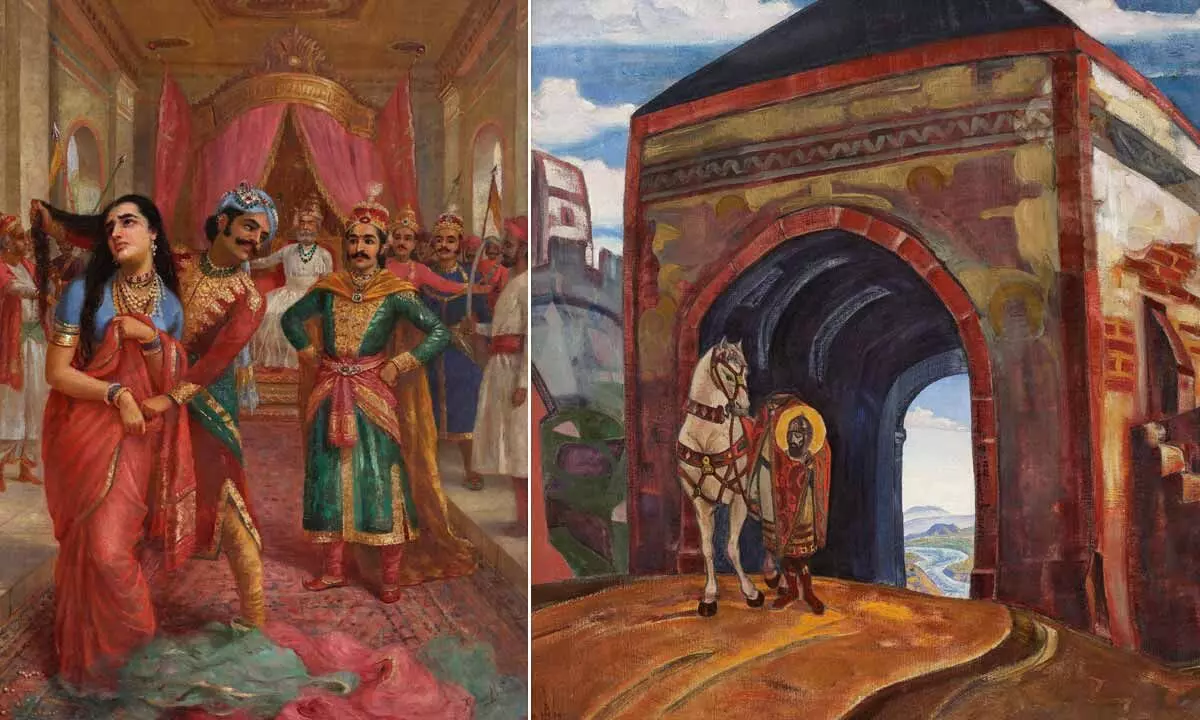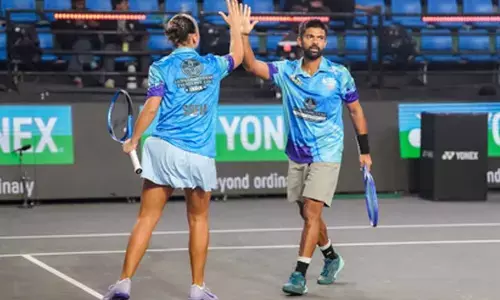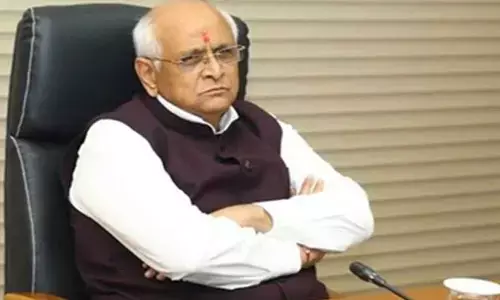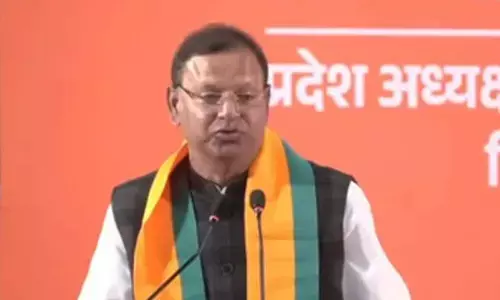New record for Tyeb Mehta work at Saffronart's spring auctions

New record for Tyeb Mehta work at Saffronart’s spring auctions
At Rs41.97 crore, it becomes the 2nd most expensive work of Indian art ever
Mehta's abiding genius lies in his forging a modernist path for Indian art, which was a perfect commingling of Indian ethos rendered in a purely modernist language. Therefore, his works such as Mahishasura, Kali, and others deriving from Indian mythology, broke new ground in terms of their rendition, showing the world that it was possible to render these historical/ mythological figures not only in a modernist vocabulary but also in a truly contemporary context. No wonder, his works continue to command record breaking prices in the market
Ever since 21 September 2005, when a Tyeb Mehta work, Mahishasura (1997) became the first Indian canvas to cross the $1 million mark at an auction in New York, the works by one of India's most important artists have remained at the forefront of pushing the envelope for the Indian art market.
Most recently, at Saffronart's Spring Live Auction in Mumbai on 6 April, Mehta's 1999 acrylic on canvas work, Untitled (Bull on Rickshaw), exceeded its pre-auction estimate to fetch Rs 41.97 crore ($5.5 million). That makes it the second most expensive work of Indian art ever, missing the top spot by a whisker - Rs 3 lakh - to a work by another Indian great, VS Gaitonde. A 1969 Untitled oil on canvas by Gaitonde, a serene blue abstract, had sold for Rs 42 crore at the Pundole's auction, 'Glenbarra: A Lasting Legacy', in Mumbai on 24 February just about five weeks ago.
Mehta's Abiding Genius
Though one of the handful few masters who command an overwhelming share of the Indian art market, Tyeb Mehta (1925-2009) was a low-profile individual (quite like VS Gaitonde, the other Indian master who shares the rarefied elevation in Indian art with him), who was his own harshest critic. It is said that more finished canvases were torn by him than those that left his studio. Arun Vadehra of New Delhi's Vadehra Art Gallery, who was close to Mehta and represented him as well, said to me for an interview on Mehta's passing in 2009, "He was highly down-to-earth and low profile. When he would call me seeking help to sell a work, I would know he needed money. And if I did ask him if he had a price in mind, he would just quote a figure to take care of his expenses. I would be aghast and tell him that he really needed to sell at what his works were worth. But he never wanted more than he really needed for his household expenses."
Mehta's abiding genius lies in his forging a modernist path for Indian art, which was a perfect commingling of Indian ethos rendered in a purely modernist language. Therefore, his works such as Mahishasura, Kali, and others deriving from Indian mythology, broke new ground in terms of their rendition, showing the world that it was possible to render these historical/ mythological figures not only in a modernist vocabulary but also in a truly contemporary context. No wonder, his works continue to command record breaking prices in the market.
Top Gainers at Saffronart Auction
With 89.09 per cent of the lots sold at the Saffronart's Spring Live Auction on 6 April, it could be called a successful outing, not just for the auction house but also for the Indian art market in general, that has surprisingly, held its ground despite the pandemic and the global lockdown. According to a release by the auction house, a total sale value of Rs 104.1 crore was achieved for the live auction, where multiple works achieved record prices.
Besides Mehta's work, other leading lots that were expected to do well, did exceed expectations. Draupadi Vastraharan, an oil on canvas work dating circa 1888-1890 by Raja Ravi Varma (1848-1906) became the second most expensive work by the artist ever sold. It was estimated at Rs 15 crore – Rs 20 crore ($2,000,000 – $2,666,670) but was eventually sold for Rs 21.60 crore ($2,880,000).
There was another Draupadi Vastraharan work on offer. This one was by the master of academic realism and first Indian headmaster of the Sir JJ School of Art, MV Dhurandhar (1867-1944). His Untitled (Draupadi Vastraharan), a 1934 work on the well-known chapter from the Mahabharat that set the dice for the great war or the Mahabharat, was estimated at Rs 4 crore – Rs 6 crore ($533,335 – 800,000). It was bought for Rs 8.04 crore or $1,072,000. This price was the highest ever for this important artist from the time when Indian art was undergoing great ferment.
Dinesh Vazirani, CEO and co-founder of Saffronart, said, "We are delighted to have opened our auction calendar with such a successful live and online auction. The record-breaking prices achieved by Tyeb Mehta's powerful work from 1999 titled Untitled (Bull on Rickshaw), Raja Ravi Varma's historically significant painting from 1888-1890 titled Draupadi Vastraharan, as well as works by M. V. Dhurandhar and Pilloo Pochkhanawala in the live sale stand testament to the skill and legacy of these artists. These are all rare works of the artists to emerge in the art market and we are honoured to have played a part in creating a new benchmark with these auctions."
Sculptor Pilloo Pochkhanawala (1923-1986), a well-known name in the art circles, has been a welcome addition to the list of top performers at the auction. Stupendous success at the market has been long overdue for this modernist sculptor who was ahead of her times. Her undated work in wood, a lyrical, modernist form, was estimated at Rs 30 lakh – Rs 50 lakh ($40,000 – $66,670) but was bought for a whopping Rs 1.44 crore ($192,000). According to Jehangir Nicholson Art Foundation, Pochkhanawala burst on to the scene in 1950s with her polished sculptures of seated women, wearing a fatalistic expression. However, she experimented with material in the 1960s and 1970s, including cement and metal, only to move on to scrap iron and steel.
At the New York auctions of Indian art in the month of March, two other Indian sculptors found long overdue favour from the collectors, with their seminal works selling way above the highest pre-auction estimate. These were Amar Nath Sehgal and Meera Mukherjee.
The first batch of big-ticket auctions for the year are now over with all the top auction houses of Indian art - Asta Guru, Christie's, Pundole's, Saffronart and Sotheby's - having brought down the hammer on their spring sales. The verdict for the Indian art market, if there could be one, is a thumbs-up as the market has shown tremendous faith in quality works across all these auctions.
It's time to wait for the next big line up in the months to come.
(The writer is a New Delhi-based journalist, editor and arts consultant. She blogs at www.archanakhareghose.blogspot.com)

















